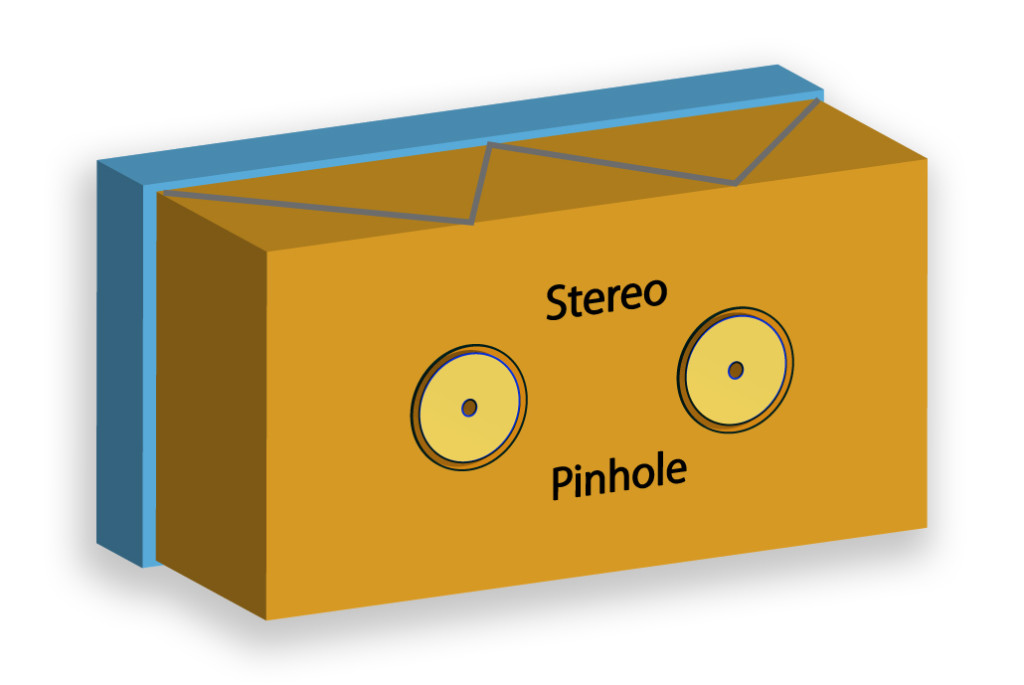.
A stereo image can easily be created with a pinhole camera that is designed with two pinholes.
The idea is to make two pinholes instead of just one. Each pinhole needs to be the same size (aperture opening). They should be placed so that they are level with each-other.
They should also be placed so that the views they produce are parallel to each other and usually spaced at a distance equal to the distance between the human eyes – called the inter-ocular distance.
The inter-ocular distance is one that will give the viewer a “normal” sense of 3d stereo for subjects that are at normal viewing distances ¨5-15 feet from the camera.
Alternatively, you can simply move a single pinhole at one eye position, and then shift the entire camera to the second eye position.
Taking that information, you could also make a sliding pinhole that would achieve the same result.
While the inter-ocular distance is considered a normal view, the stereo effect will not have much effect on subjects at a distance. In order to obtain stereo with subjects far away from the camera, you will need to space the pinholes at a greater distance apart to create what is called a hyper-stereo image. That distance depends on the distance of the subject as well as the focal length of the camera.
Similarly, you can reduce the distance to produce close-up and macro images that will separate out as right and left views for normal viewing.
It is also possible to shoot two images, if your camera and subject will allow it, with a single pinhole camera by simply moving the camera and taking a second exposure. Make sure to keep the camera at the same distance, at the same elevation, and parallel to the first shot. Sliding the camera sideways should do the trick.
To understand a bit more about how pinhole cameras work, you might need to read the following post.
Creative Pinhole Camera Possibilities
There is plenty of other information about pinhole cameras that can be found at www.pinholeday.org.
NOTICE of Copyright: THIS POSTING AS WELL AS ALL PHOTOGRAPHS, GALLERY IMAGES, AND ILLUSTRATIONS ARE COPYRIGHT © JOHN NEEL AND ARE NOT TO BE USED FOR ANY PURPOSE WITHOUT WRITTEN CONSENT FROM THE WRITER, THE PHOTOGRAPHER AND/OR lensgarden.com. THE IDEAS EXPRESSED ARE THE PROPERTY OF THE PHOTOGRAPHER AND THE AUTHOR.


